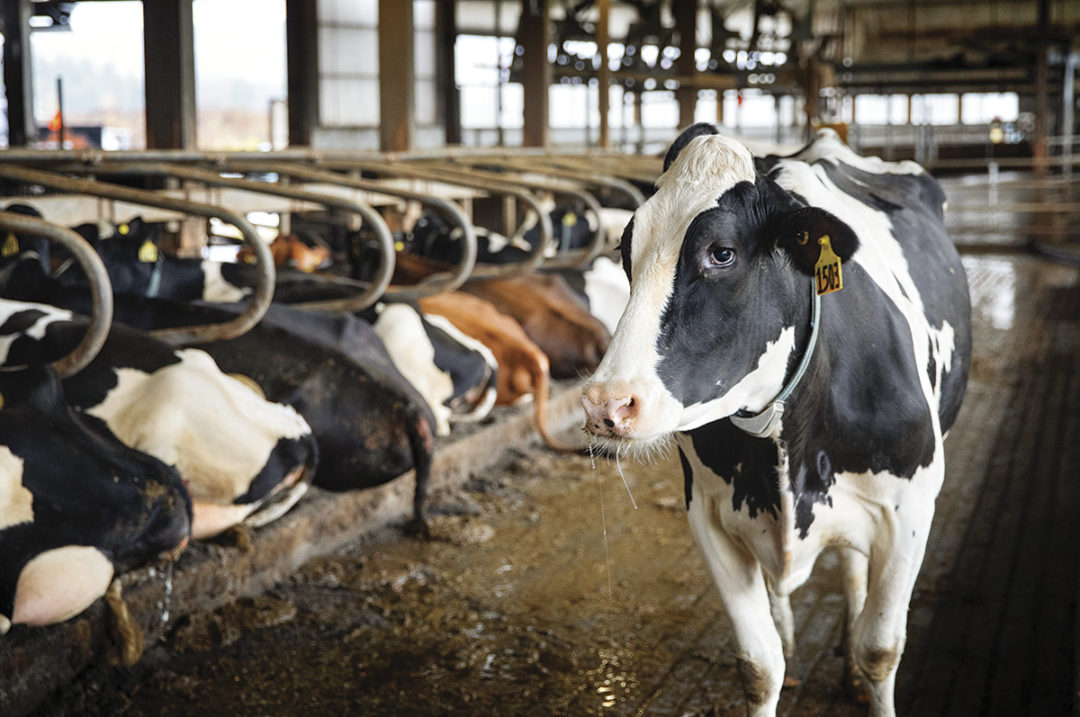Dairy cows respond to the challenges of the transition period in ways that are both dynamic and cow specific. This is especially true for the challenge of maintaining calcium balance immediately following calving. With the onset of lactation, cows begin secreting copious amounts of calcium in their milk, to the extent that their dietary intake cannot compensate for the loss of this essential mineral. Cows must coordinate a response to this challenge to maintain calcium balance, and those that fail to do so often develop milk fever, or clinical hypocalcemia. While this is certainly an important disease, prepartum diet management, and well-established treatment protocols minimize the impact that milk fever has on cows and herds. For cows that do not develop milk fever, individual dynamic responses to the early lactation calcium challenge are varied. These individual responses can be identified by measuring blood calcium at one and four days in milk (DIM), such that the dynamics of calcium at and between these timepoints can classify individual cows into one of four “calcium dynamic groups.” Each group is associated with different health and production outcomes that, for the sake of this article, we consider: worst, at risk for negative health outcomes and producing the least milk; bad, at risk for negative health outcomes but producing decent to appreciable amounts of milk; good, consistently healthy and producing average amounts of milk; and excellent, consistently healthy and producing exceptional amounts of milk.
Because of these different outcomes, it is useful to classify cows into their respective calcium dynamic groups on farms. This way, dairy producers can identify cows that might be at a greater risk of disease or cows that might become high milk producers, and give each of these cow groups special treatment. Unfortunately, in the absence of an economical on-farm test for blood calcium, this remains a management impossibility. Without the ability to differentiate between these groups of cows, farmers must be content knowing that significant numbers of their cows are experiencing an invisible condition that predisposes them to disease and low milk production.
But what if it was possible to identify cows with different calcium dynamics without measuring blood calcium?
Milk analysis using Fourier-transform infrared spectroscopy, the technique used during routine DHI tests, has been used in the past to identify cows at risk of other negative health events, and for this reason we thought it might be possible to use these methods to discriminate between our calcium dynamic groups. So, we conducted a study to find out.
Our study was carried out on a freestall dairy in Cayuga County, NY, milking 4,500 cows thrice daily on a 100-cow rotary parlor. These cows were all fed a negative dietary cation anion difference diet prepartum. We sampled the blood of 343 multiparous Holsteins at one and four DIM to determine blood calcium concentration and milk from three to ten DIM for analysis of constituents. Using blood calcium concentrations, we classified cows into their calcium dynamic groups and then looked at their milk constituents.
We found that the bad and worst calcium groups did not differ from each other with respect to any of the measured constituents, on any of the sample days. The worst group had consistently lower protein percentage in their milk than the good cows, and lower lactose percentages at early timepoints. The excellent group had higher lactose than the worst group at the beginning of the sample period and higher products of protein degradation (milk urea nitrogen) toward 10 DIM. De novo fatty acids (sum of C4 thru C14), fatty acids found in milk, synthesized in the mammary gland, and thought to be an indicator of positive ruminal health, was higher in the milk of good cows than in the milk of any other group for the majority of the sample period. Preformed fatty acids (C18 and greater), another group of milk fatty acids originating in the diet or from mobilized body reserves and thought to be an indicator of energy deficit, was higher in the milk of excellent cows than the milk of good cows, which was surprising, but likely an indication of their immense need for energy due to high milk yield. The differences in milk ketone bodies were largely unremarkable. Over the sample period excellent cows produced more milk than the worst cows on all of the days, more milk than the good cows on half of the days, and more milk than the bad group on a quarter of the days. Overall, milk constituents of the good group were consistently different from those of the excellent, bad and worst groups. Even though the excellent group shared some constituent patterns in common with the bad and worst groups, milk production of the excellent group clearly differentiated this group from the worst group.
While these findings are certainly promising, we cannot generalize to every group of dairy cows. This study was conducted on a single dairy in upstate New York; thus, the findings may be the product of unique population, management scheme, or environment. Additionally, we cannot infer any causal relationships between calcium dynamics observed and the associated constituent levels.
Despite these limitations, this study does indicate that there may be relevant differences between the constituent profiles for cows of differing calcium dynamics. Therefore, this work adds evidence that Fourier-transform infrared spectroscopy can be used as a tool to capture nuances in calcium dynamics on commercial dairies and thus influence cow management and health. Though other studies must be performed to determine if this method can be widely applicable, our study indicates that these methods hold potential and further research is warranted.
 |
This article appeared in PRO-DAIRY's The Manager in November 2022. To learn more about Cornell CALS PRO-DAIRY, visit PRO-DAIRY. |






